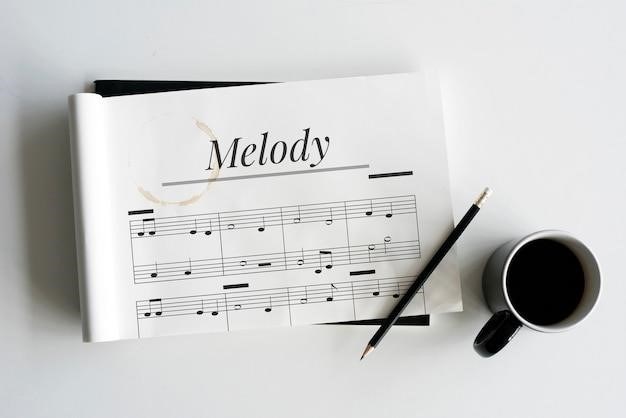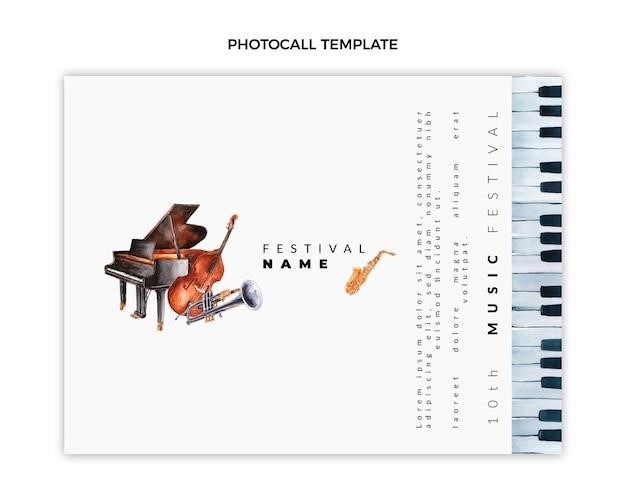Suzuki Viola School, Volume 1⁚ A Comprehensive Guide
This guide explores the Suzuki Viola School, Volume 1, a foundational resource for young viola players․ We’ll delve into the Suzuki method’s philosophy, the structure of the book, teaching techniques, and resources for parents and teachers․
Introduction
The Suzuki Viola School, Volume 1, is a cornerstone of musical education for young viola players․ This comprehensive guide, designed by renowned educators Doris Preucil and Shinichi Suzuki, presents a carefully structured approach to learning the viola through beautiful and engaging music․ The book is built upon the philosophy of the Suzuki Method, which emphasizes the development of musical talent through immersion and repetition, fostering a love for music in young learners․ Volume 1 serves as the starting point for this journey, introducing fundamental viola techniques, musical concepts, and a captivating repertoire of pieces that ignite a passion for music in budding musicians․
The Suzuki Method⁚ A Philosophy of Talent Education
The Suzuki Method, the foundation of the Suzuki Viola School, Volume 1, embraces the belief that every child possesses the potential for musical talent․ This philosophy, championed by Dr․ Shinichi Suzuki, emphasizes the importance of nurturing a child’s musical abilities through an environment rich in music and positive reinforcement․ The method encourages early exposure to music, creating a foundation of listening and understanding before formal instruction begins․ It emphasizes the role of parents as primary teachers, guiding their children through the learning process with patience and encouragement․ The Suzuki Method aims to cultivate not only musical skills but also a love for music, fostering a lifelong appreciation for the art form․
Suzuki Viola School, Volume 1⁚ Content and Structure
Suzuki Viola School, Volume 1, is carefully structured to guide beginning viola students through their initial musical journey․ The book features a collection of well-known melodies, each presented in a progressive manner․ It begins with familiar tunes like “Twinkle, Twinkle, Little Star,” introducing basic musical concepts and viola techniques․ The repertoire gradually expands, introducing new musical elements and expanding the viola’s range․ The book’s content is designed to develop not only technical proficiency but also musicality, encouraging young violists to play with expression and feeling․ Each piece is carefully chosen for its pedagogical value, providing a solid foundation for further musical exploration․
Twinkle, Twinkle, Little Star Variations

The Suzuki Viola School, Volume 1, begins its musical journey with a familiar and beloved tune⁚ “Twinkle, Twinkle, Little Star․” This simple melody serves as a springboard for introducing fundamental viola techniques and musical concepts․ The book presents several variations of the tune, each building upon the previous one․ These variations introduce different bowing patterns, finger positions, and rhythmic variations, gradually increasing the complexity of the music․ This approach allows young violists to master the basics while exploring the creative potential of a familiar melody, fostering a sense of accomplishment and encouraging them to enjoy the learning process․
French Folk Song
Following the “Twinkle, Twinkle, Little Star” variations, Suzuki Viola School, Volume 1, introduces the enchanting “French Folk Song․” This piece offers a delightful shift in character, showcasing a more melodic and expressive style․ It features a simple, yet captivating melody with a gentle, flowing rhythm, perfect for developing a young viola player’s sense of phrasing and musical expression․ The “French Folk Song” also introduces a new finger position, requiring students to stretch their left hands and develop greater dexterity․ This piece serves as a stepping stone to more challenging repertoire, encouraging students to explore the expressive capabilities of the viola while building essential technical skills․
Lightly Row
The “Lightly Row” piece in Suzuki Viola School, Volume 1, introduces a more rhythmic and playful feel․ This piece features a steady, rocking rhythm, perfect for developing a student’s bow control and sense of timing․ The melody, reminiscent of a gentle rocking motion, invites the student to explore different bow speeds and dynamics, creating a sense of movement and expression․ “Lightly Row” also serves as a valuable tool for developing a student’s ability to play in a consistent, even tone, crucial for building a strong foundation in viola playing․ This piece encourages students to enjoy the musicality of the viola while honing their technical skills, making it an enjoyable and engaging learning experience․
Song of the Wind
Suzuki Viola School, Volume 1, introduces “Song of the Wind,” a piece that challenges students to develop their ability to play with a light, delicate touch․ The melody, characterized by its gentle, flowing nature, encourages students to use a lighter bow stroke and subtle finger pressure, creating a sense of airiness and grace․ This piece also emphasizes the importance of listening carefully to the nuances of the music, allowing the student to create a truly expressive performance․ The “Song of the Wind” is a beautiful piece that inspires students to explore the delicate sounds and expressive possibilities of the viola, while refining their technical skills․
Go Tell Aunt Rhody
Suzuki Viola School, Volume 1, features “Go Tell Aunt Rhody,” a lively folk tune that introduces students to the concept of rhythmic variations and the importance of clear articulation․ The piece utilizes a simple melody but presents challenges in maintaining a steady rhythm and achieving a crisp, distinct sound․ Students are encouraged to practice the piece with a metronome, ensuring accuracy and developing their sense of timing․ The playful nature of the melody also helps students to engage with the music, fostering a sense of joy and confidence in their playing․
Teaching Points and Techniques
Suzuki Viola School, Volume 1, emphasizes a holistic approach to learning, encompassing both technical skills and musicality․ Teachers guide students through a series of exercises that develop fundamental techniques, including proper bow hold, left-hand positioning, and finger placement․ Emphasis is placed on cultivating a beautiful, expressive tone, encouraging students to listen carefully to the music and strive for musical phrasing․ The book also integrates listening activities, encouraging students to develop their aural skills and memorize the pieces through repeated listening․ This approach reinforces the connection between sound and notation, fostering a deeper understanding of music․
Bow Hand and Left Hand Exercises
The Suzuki Viola School, Volume 1, incorporates a variety of exercises designed to develop proper bow hand and left-hand technique․ These exercises focus on achieving a relaxed and controlled bow hold, promoting smooth and accurate bowing․ Students are guided through exercises that emphasize the importance of using the weight of the bow, maintaining a consistent bow speed, and achieving a clear, resonant tone․ Left-hand exercises focus on finger placement, intonation, and shifting; Students are encouraged to develop a secure finger position, ensuring accurate intonation and seamless transitions between notes․ These exercises lay the foundation for a strong technical foundation, enabling students to play with precision and expressiveness․
Developing Listening and Memorizing Ability
The Suzuki Method emphasizes the importance of developing a strong auditory foundation, promoting the ability to listen attentively and internalize musical phrases․ Suzuki Viola School, Volume 1, encourages students to listen to recordings of the pieces they are learning, fostering a deep understanding of the melodies and harmonies․ Memorization is a key component of the Suzuki Method, and students are guided to memorize pieces through repeated listening and practice․ This process encourages the development of a strong musical memory, allowing students to play from memory with confidence and expression․ The focus on listening and memorizing fosters a deeper connection to the music, enabling students to internalize the essence of each piece and express their own interpretations․
Building Basic Playing Skills
Suzuki Viola School, Volume 1, provides a carefully structured foundation for developing essential viola playing skills․ The book introduces fundamental techniques, including proper posture, bow hold, and left-hand finger placement․ Through a series of progressive exercises, students are guided to develop a smooth and controlled bow stroke, accurate intonation, and clear articulation․ The repertoire in Volume 1 is designed to reinforce these foundational skills, allowing students to gradually build their technical proficiency while exploring beautiful and engaging melodies․ The emphasis on gradual progression and repetition ensures that students develop a strong technical foundation, setting the stage for further musical exploration and growth․
Resources for Parents and Teachers
To support parents and teachers in their journey with the Suzuki Viola School, Volume 1, a variety of valuable resources are available․ These resources provide guidance, support, and tools to enhance the learning experience․ Parents can access practice records and teaching guides online, helping them monitor their child’s progress and provide effective guidance․ The Suzuki Method emphasizes the importance of listening, and online audio recordings of the pieces in Volume 1 are readily available․ Additionally, resources on music theory and notation are available to further enhance understanding and musical literacy․ These resources empower parents and teachers to play an active role in the student’s musical development, fostering a supportive and enriching learning environment․
Suzuki Viola School, Volume 1⁚ PDF Downloads
For those seeking a convenient and readily accessible format, PDF downloads of Suzuki Viola School, Volume 1, are widely available online․ These digital versions offer a portable and user-friendly way to access the music and exercises․ Various websites and online platforms host these downloads, allowing users to download the PDF directly to their devices․ This format provides flexibility for students and teachers, enabling them to practice and study the material at their convenience, regardless of location․ The availability of PDF downloads makes the Suzuki Viola School, Volume 1, a readily accessible resource for aspiring viola players;
Online Practice Records and Teaching Guides
Complementing the Suzuki Viola School, Volume 1, are a wealth of online resources designed to enhance the learning experience․ These digital tools provide valuable support for both students and teachers․ Online practice records offer a structured framework for tracking progress and monitoring practice sessions․ These records often include sections for noting listening exercises, bow hand and left-hand exercises, and performance feedback․ Additionally, online teaching guides provide educators with supplementary materials, such as teaching points, lesson plans, and performance suggestions․ These online resources streamline the learning process by offering a comprehensive and interactive approach to Suzuki Viola School, Volume 1․
Music Theory and Notation
While the Suzuki Viola School, Volume 1, emphasizes learning by ear and developing aural skills, it also introduces fundamental music theory and notation concepts․ Students gradually learn about note values, rhythms, key signatures, and basic music terminology․ These elements are integrated organically into the musical pieces, allowing students to grasp theoretical concepts through practical application․ This approach fosters a holistic understanding of music, enabling students to develop both their musical ear and their understanding of the written language of music․ The Suzuki method emphasizes a gradual and intuitive approach to music theory and notation, making it accessible to young learners․

The Suzuki Viola School, Volume 1, serves as a comprehensive introduction to the viola and the Suzuki method․ It provides a carefully structured repertoire that fosters musical growth through listening, memorization, and technical development․ This book is a valuable resource for both students and teachers, laying a strong foundation for a lifelong journey in music․ Parents can actively participate in their child’s musical development by listening, supporting practice, and creating a nurturing environment․ The Suzuki method emphasizes the importance of nurturing talent through love, patience, and dedication, encouraging a positive learning experience for all involved․
